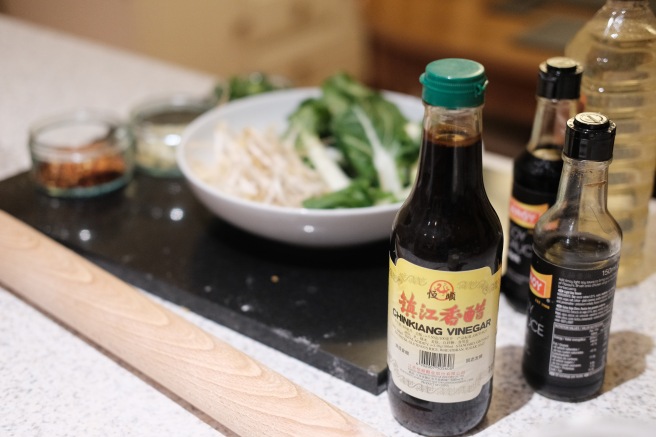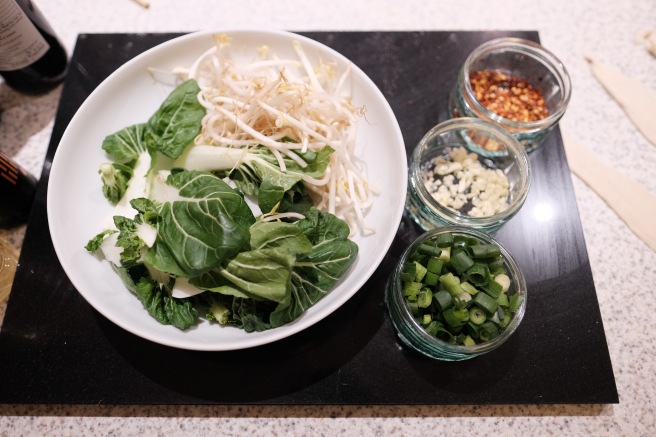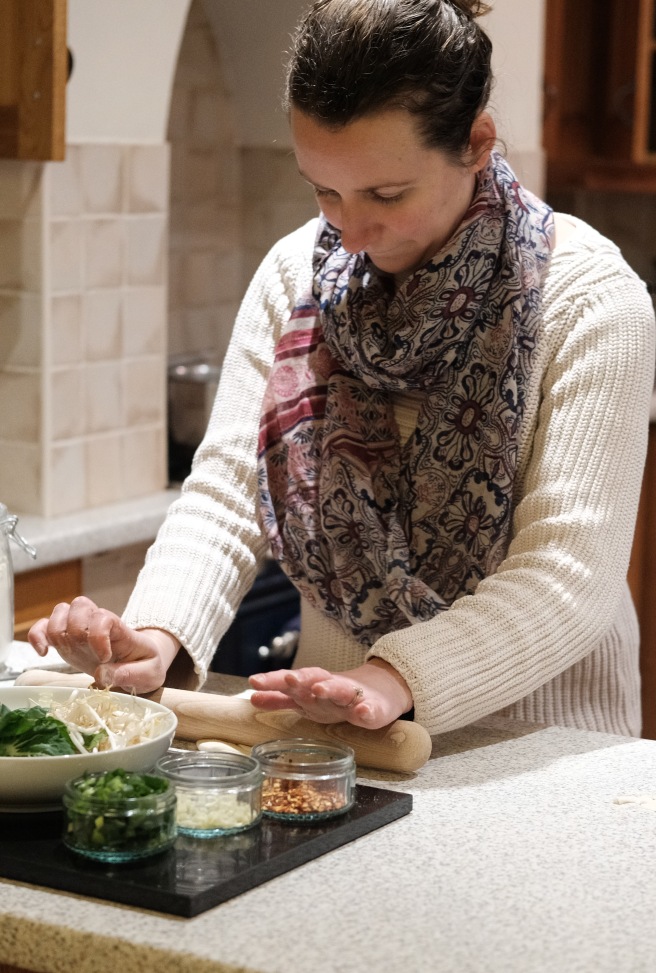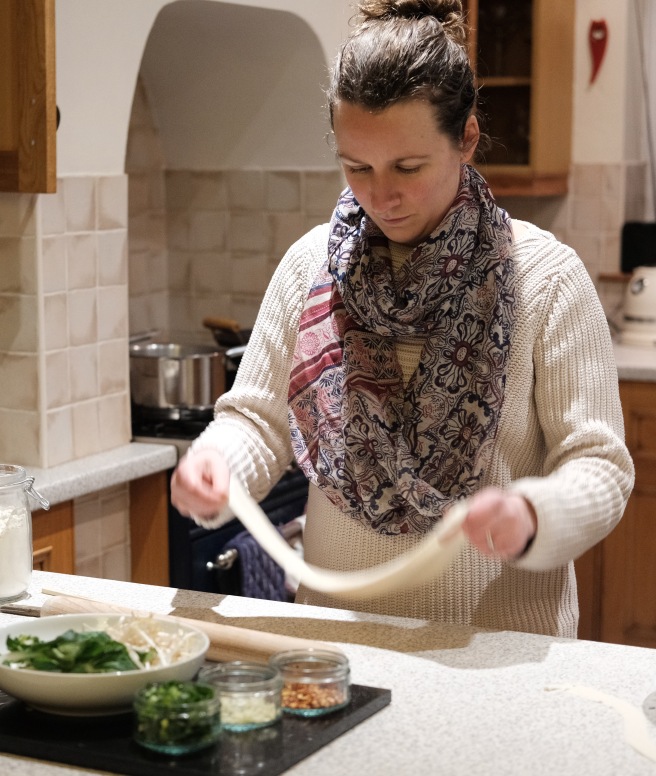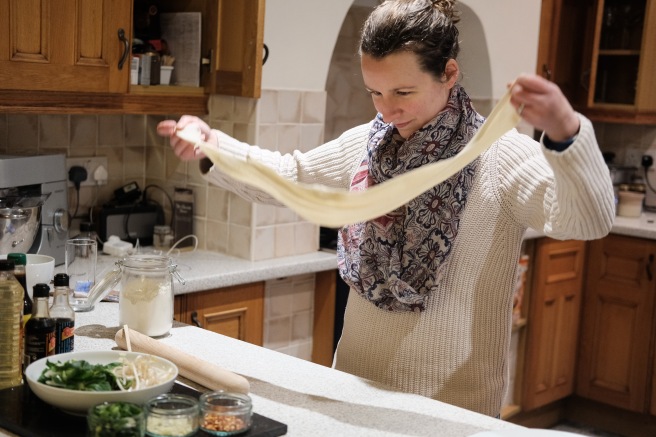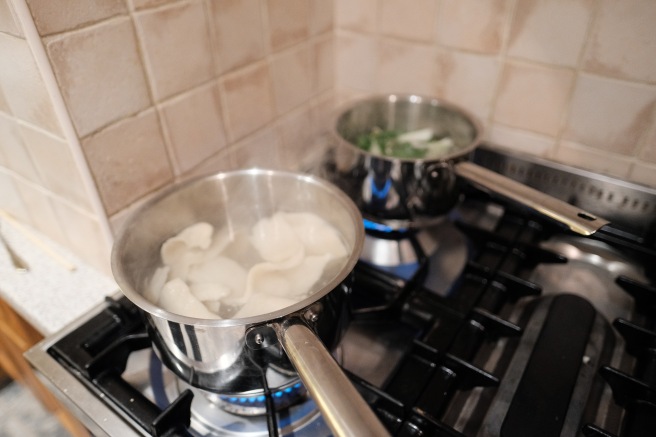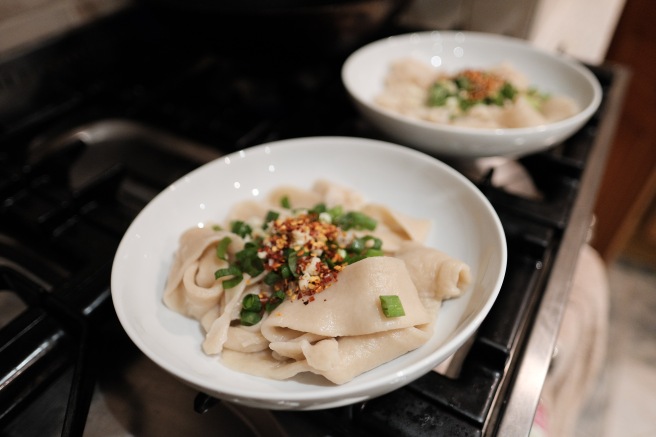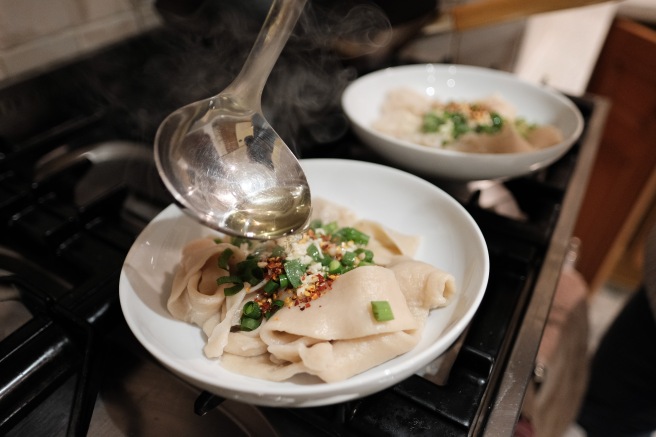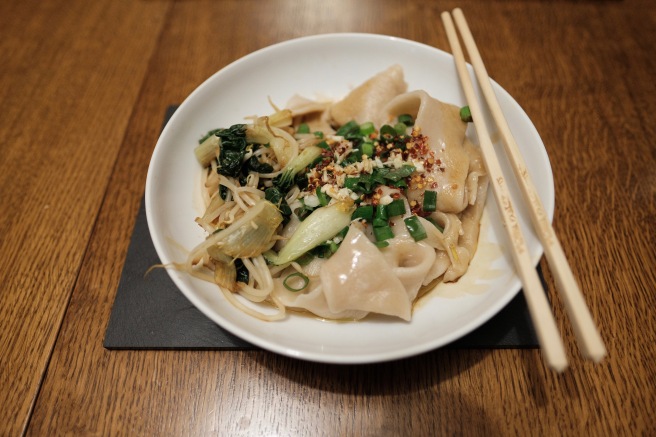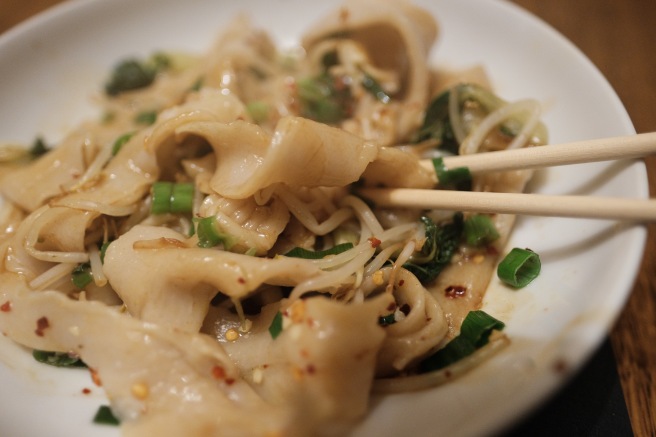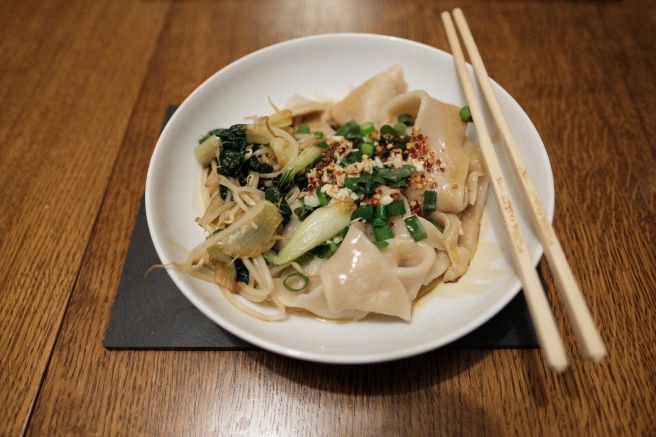
I keep getting massive food envy from Instagram, especially when I see people’s pictures from a restaurant in London called Xi’an Impression. These thick, unctuous noodles – Biang Biang Noodles, my fellow Instagrammers’ helpful hash tags informed me – looked like nothing I’d seen before. It seemed unlikely that such deliciousness would be available in any of Bangor’s fine eateries, so I set out to making my own!
I found this video on YouTube and the guy made it look surprisingly easy! I started by making the dough – converting his recipe from imperial measurements (140g for a cup of flour; 225ml for a cup of liquid) and… it was an unmitigated disaster! I had to throw the first batch of dough in the bin, it was gloopy and disgusting. I got lazy with the second batch and, instead of using the mixing with chopsticks method preferred by the video, I pulled out my trusty Kenwood chef with a dough hook (adding the water in splashes until it had the springy, doughy, texture I was after) and it was perfect.
The very best thing about this recipe is the sizzle and the amazing smell of the garlic, chilli and onions as you pour the hot oil over them in the dish – it will be hard to go back to Pot Noodles after you’ve tried these!
Ingredients
280g strong white bread flour
1 tsp salt
180ml hand-hot water (have a little extra in your jug, in case you need to add another splash to the dough as it’s mixing)
30ml sesame oil
5 spring onions, finely sliced
3 cloves of garlic, finely chopped
4 tsp crushed dried chilli flakes (this makes it quite spicy – use less if you prefer a milder dish, or more if you like it really hot)
2 baby pak choi, leaves picked
Handful of bean sprouts
60ml groundnut oil (sometimes called peanut oil in recipes)
1 tbsp Chinese black vinegar
1 tbsp light soy sauce
1 tbsp dark soy sauce
1 tbsp bouillon powder
Method
1. Sieve the flour into a bowl and add the salt. Tip into an electric mixer with a dough hook.
2. With the mixer on its lowest setting, add the warm water to the flour in splashes, waiting until one splash has combined before adding the next one. You may not need all the water – when the mixture has formed into a springy dough ball, that’s enough. Leave the mixer to knead the dough for ten minutes. Place the dough in a bowl, cover, and set aside for 30 minutes.
3. Remove your dough from the bowl and place on a lightly-floured surface. Roll it out slightly so that it takes a loaf shape, then divide into four even-sized pieces. Roll each piece into a thick sausage shape, about 3 inches long. Dip each piece into sesame oil so that it is fully coated, place on a plate, then cover the plate with clingfilm and leave in the fridge for an hour. You can use this time to crack on with prepping the rest of your vegetables as everything comes together quite quickly when the noodles are ready.
4. Lightly flour your work surface and rolling pin, and roll each piece of dough into a thin rectangle. Lightly press a chopstick into the rectangle at two evenly-spaced junctures (so that your strip has got three even demarcated sections). Now the fun begins!
5. Take a side of one of your rectangles of dough in each hand and gently shake it up and down, smashing it against the board as you go (apparently the ‘biang’ noise it makes as it hits the board is where biang biang noodles get their name!). The best way I can describe this motion is that it’s a bit like playing the wobble board! The dough will stretch as you shake it, and will start to come apart in three long noodles where you indented the dough. Pull the three noodles apart and set aside when you repeat with your three other pieces of dough. When you are half-way through making your noodles, place a large and a medium sized saucepan of boiling water and keep them both on a rolling boil. Put your groundnut oil into a wok but don’t put the heat under it yet.
6. When your noodles are made, quickly pop them into the large pot of boiling water and cook for three minutes. Put the pak choi leaves and beansprouts into the medium pot of boiling water and blanch for a minute and a half; drain and set aside. Mix the soy sauces, vinegar, and bouillon powder in a bowl, then mix with your pak choi and beansprouts and keep warm over a gentle heat. Drain the noodles, and divide them between two warmed bowls.
7. Heat the groundnut oil in the wok until it starts to smoke. Divide the spring onions, then the garlic, then the chilli flakes between the two bowls of noodles. Try to keep the garlic and chilli towards the middle of the bowl.
8. Using a ladle, pour some of the hot oil over the chilli and garlic in each bowl. Listen to that sizzle!! Breathe in that delicious smell! Add a little more hot oil to each plate – you probably won’t use all that you’ve heated up. Add the pak choi and beansprouts in sauce to each plate and eat immediately!
